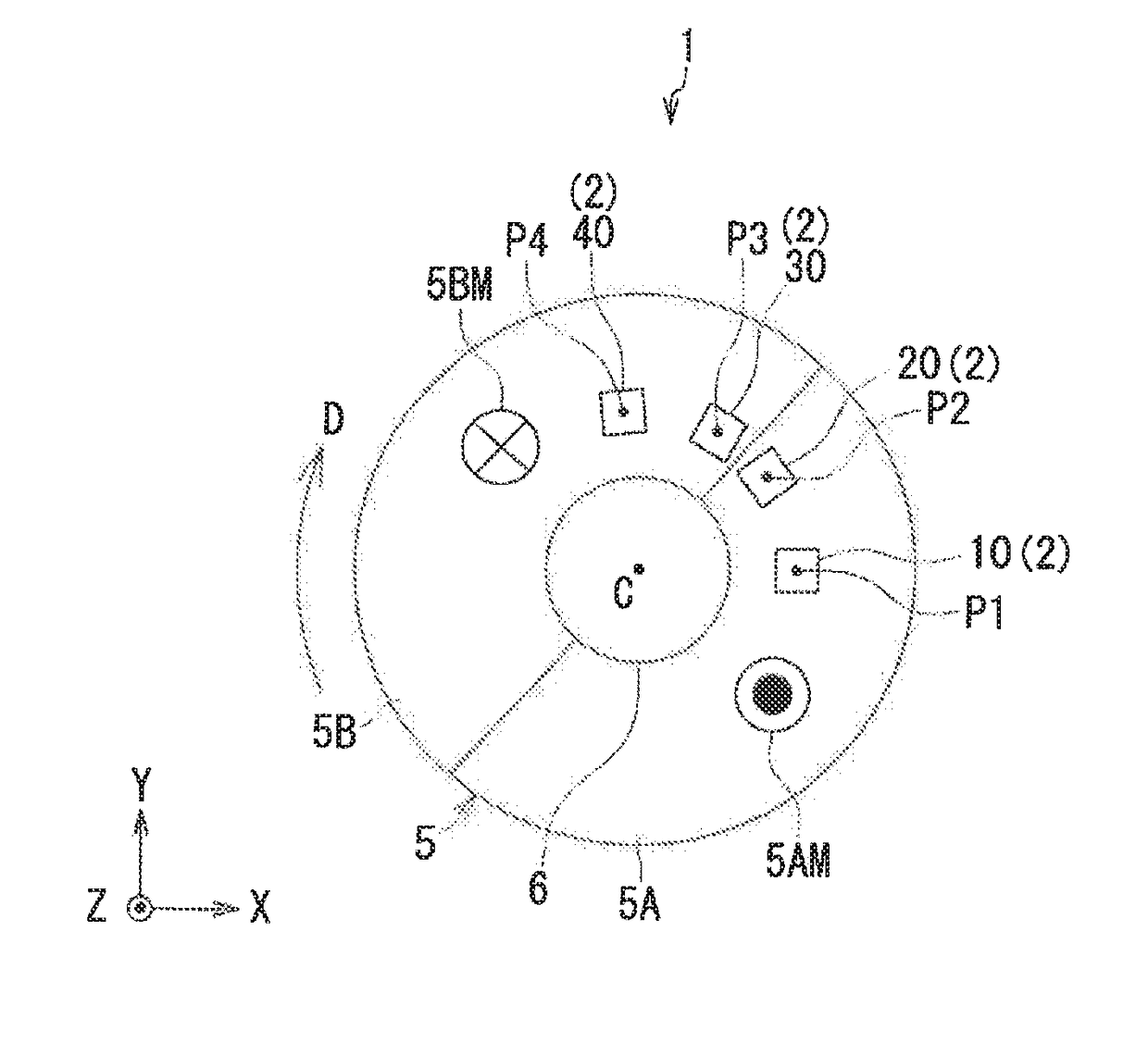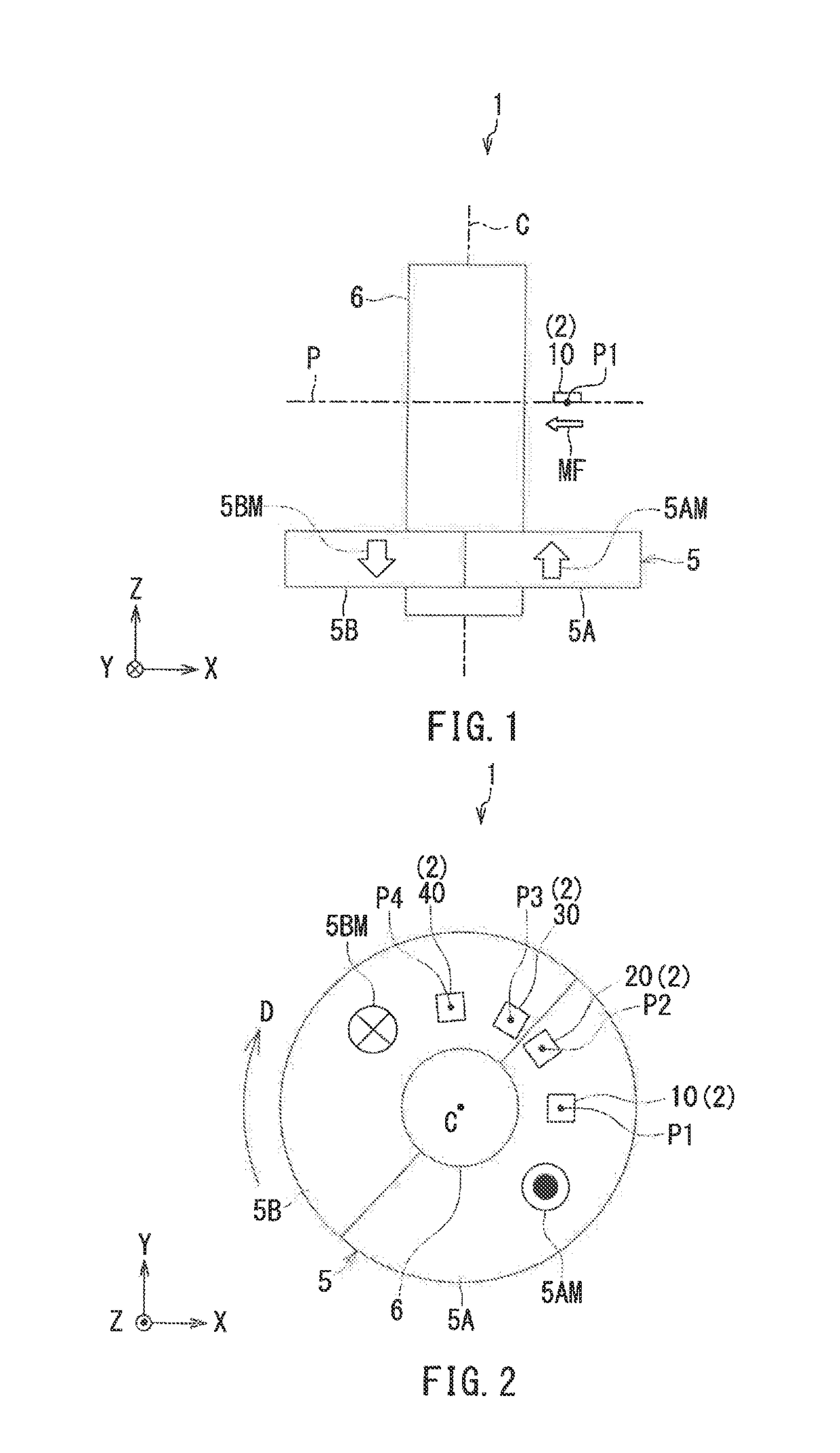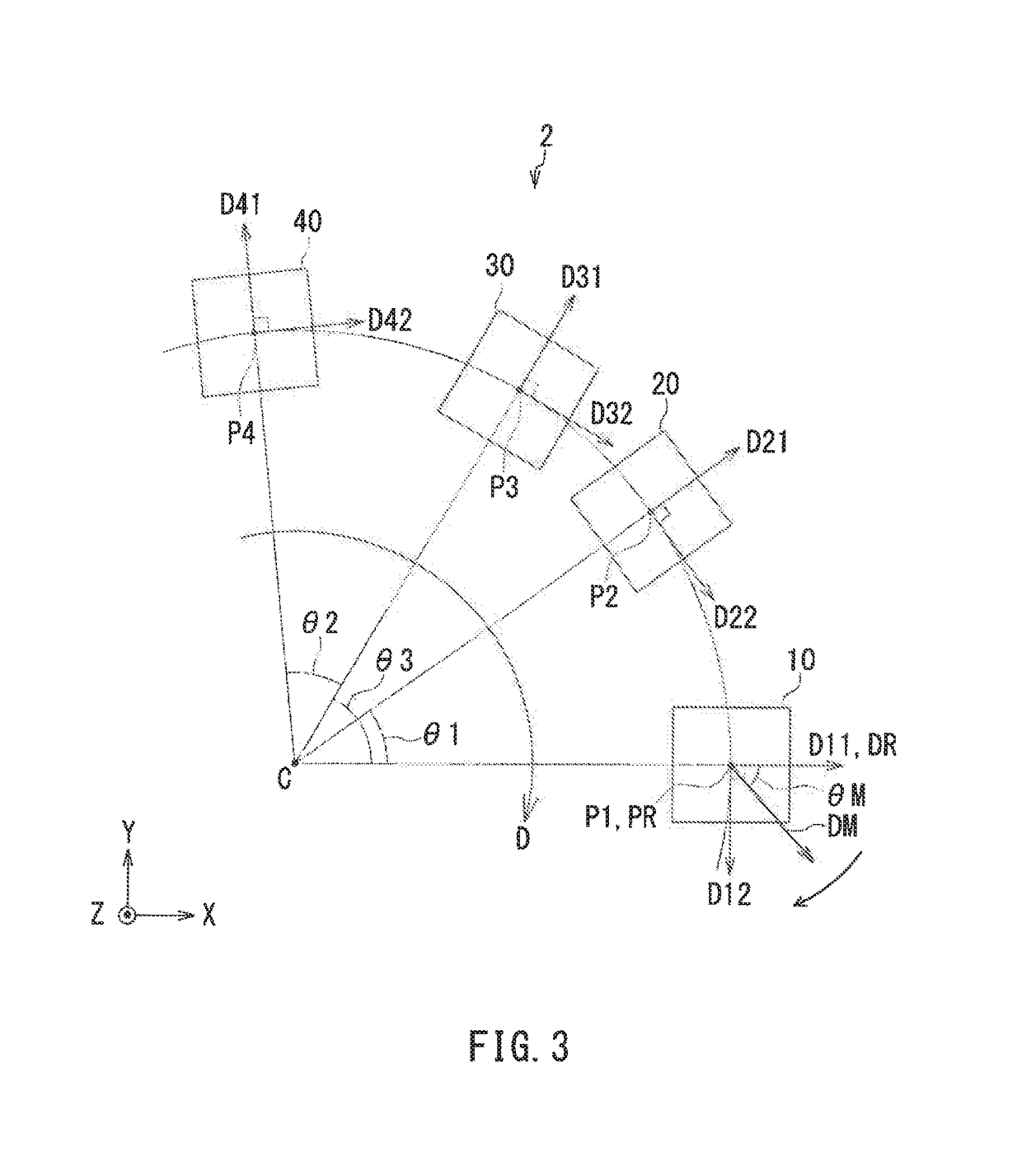Angle sensor and angle sensor system
a sensor and angle technology, applied in the direction of electrical/magnetically converting sensor output, measuring devices, instruments, etc., can solve the problems of affecting the accuracy of the detection signal, the distortion of the waveform of each detection signal, and the error of the detected angle value, so as to achieve the effect of reducing the angular error
- Summary
- Abstract
- Description
- Claims
- Application Information
AI Technical Summary
Benefits of technology
Problems solved by technology
Method used
Image
Examples
first embodiment
[0061]Preferred embodiments of the present invention will now be described in detail with reference to the drawings. First, reference is made to FIG. 1 and FIG. 2 to describe the general configuration of an angle sensor system according to a first embodiment of the invention. The angle sensor system 1 according to the first embodiment includes an angle sensor 2 according to the first embodiment. The angle sensor 2 according to the first embodiment is a magnetic angle sensor, in particular. As shown in FIGS. 1 and 2, the angle sensor system 1 further includes a magnetic field generation unit 5 for generating a rotating magnetic field MF whose direction rotates. The angle sensor 2 is configured to generate a detected angle value having a correspondence with an angle that the direction of the rotating magnetic field MF in a reference position forms with respect to a reference direction. Hereinafter, the angle that the direction of the rotating magnetic field MF in a reference position ...
second embodiment
[0173]A second embodiment of the invention will now be described. First, reference is made to FIG. 13 to describe the general configuration of an angle sensor system according to the second embodiment. The angle sensor system 1 according to the second embodiment differs from that according to the first embodiment in the following ways. The angle sensor system 1 according to the second embodiment includes a magnetic field generation unit 7 in place of the magnetic field generation unit 5 of the first embodiment. The magnetic field generation unit 7 of the present embodiment is a magnet of a cylindrical shape for generating a rotating magnetic field MF whose direction rotates. The magnetic field generation unit 7 rotates about a central axis C in a rotational direction D.
[0174]The magnetic field generation unit 7 includes a first portion 7A and a second portion 7B magnetized in mutually different directions. The first portion 7A and the second portion 7B are arranged symmetrically wit...
third embodiment
[0194]A third embodiment of the invention will now be described. First, reference is made to FIG. 15 to describe the general configuration of the angle sensor system according to the third embodiment. The angle sensor system 1 according to the third embodiment differs from that according to the first embodiment in the following ways. The angle sensor system 1 according to the third embodiment includes a magnetic field generation unit 8
[0195]In FIG. 15, the X direction is rightward, the Y direction is upward, and the Z direction is out of the plane of the drawing. The magnetic field generation unit 8 includes a plurality of sets of the first and second portions 8A and 8B arranged alternately in a linear configuration along the X direction. The first portion 8A and the second portion 8B are magnetized in mutually opposite directions. In FIG. 15, the hollow arrows indicate the magnetization directions of the portions 8A and 8B. In FIG. 15, each first portion 8A is magnetized in the Y d...
PUM
 Login to View More
Login to View More Abstract
Description
Claims
Application Information
 Login to View More
Login to View More - R&D
- Intellectual Property
- Life Sciences
- Materials
- Tech Scout
- Unparalleled Data Quality
- Higher Quality Content
- 60% Fewer Hallucinations
Browse by: Latest US Patents, China's latest patents, Technical Efficacy Thesaurus, Application Domain, Technology Topic, Popular Technical Reports.
© 2025 PatSnap. All rights reserved.Legal|Privacy policy|Modern Slavery Act Transparency Statement|Sitemap|About US| Contact US: help@patsnap.com



